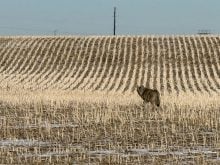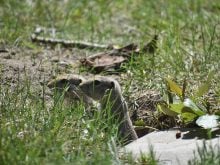Growing conditions across most of the Prairies are absolutely perfect.
For flea beetles.
And farmers are waging a chemical war against the oilseed-hungry bugs while there’s still time.
“There’s an awful lot of spraying going on,” said Saskatchewan Agriculture agrologist Larry Gramiak, of Saskatoon.
“When you have a canola crop that’s not developing rapidly and you have a high flea beetle population eating voraciously, you’ve got a problem.”
The hot, dry spring is allowing flea beetles to quickly reach the fields from their overwintering homes in shelterbelts and ditches. The heat is making them hungry and they’re growing fast.
Read Also

Agritechnica Day 2: The future of tractor power, building quicker crop apps and large farms and tech
Agritechnica Day 2: The future of tractor power, building quicker crop apps with Syngenta and large farms and tech
At the same time many canola crops have emerged but are prevented from developing by the dry conditions, Gramiak said.
Flea beetles are a threat to canola and mustard until about the middle of June. Normally an advancing crop can outgrow the damage flea beetles cause.
But this year the oilseeds are not growing fast enough to outpace the bugs, Gramiak said.
Flea beetles damage plants by grazing on leaves during spring. They eat the leaf surfaces, so the underlying tissue dries and crumbles, leaving shotholes.
Insecticide-treated seeds and pre-emergent granular chemicals are the most effective flea beetle suppressors. But producers can spray post-emergents once bug populations become a problem.
Gramiak said he recommends spraying once the beetles are causing damage to 20 percent of the leaf surfaces in a crop.
While many producers are relying on chemical control for now, they need a good rain, said Gramiak. Once the crops get back to fast development they’ll be able to withstand bug attacks much better.
“They’re under an awful lot of stress.”















